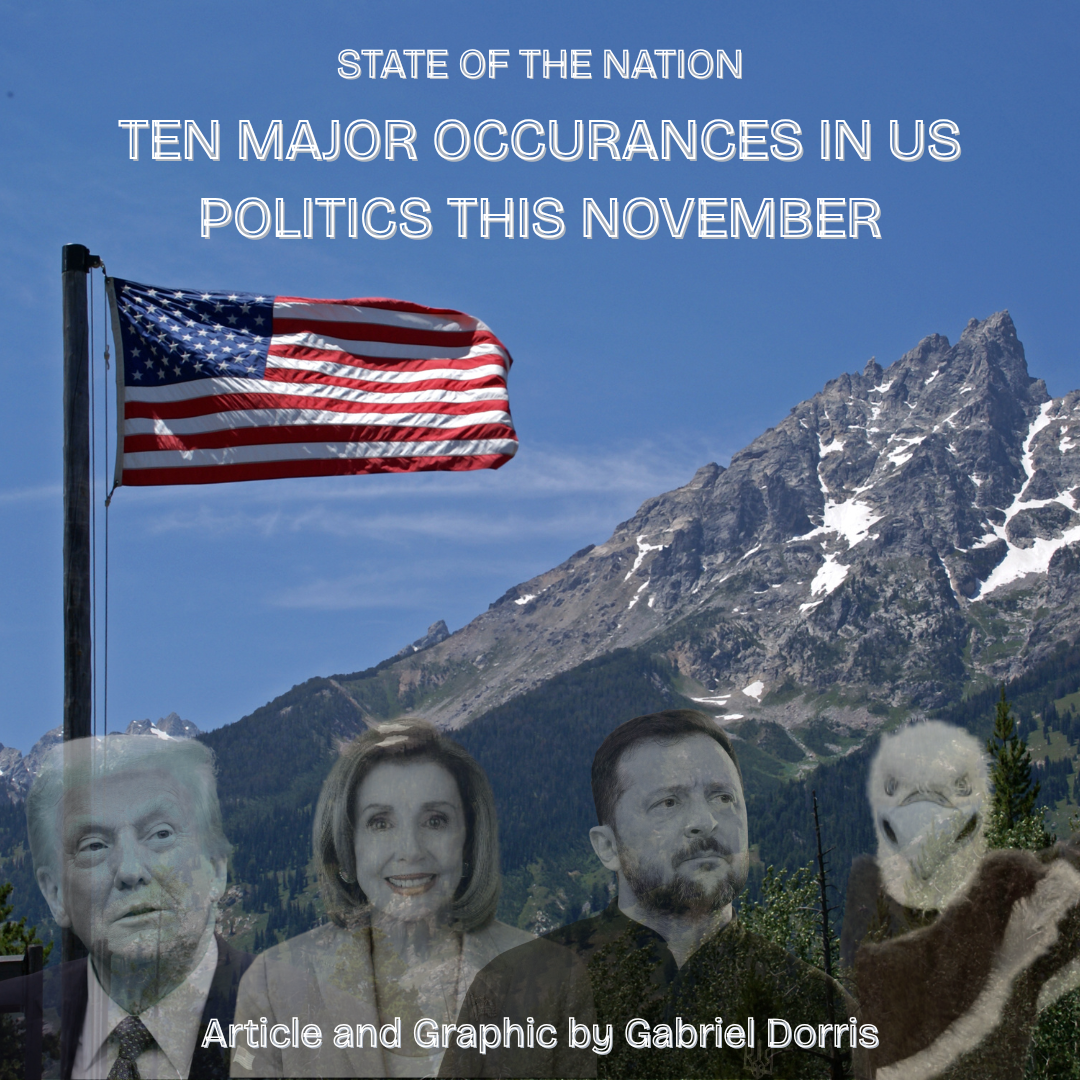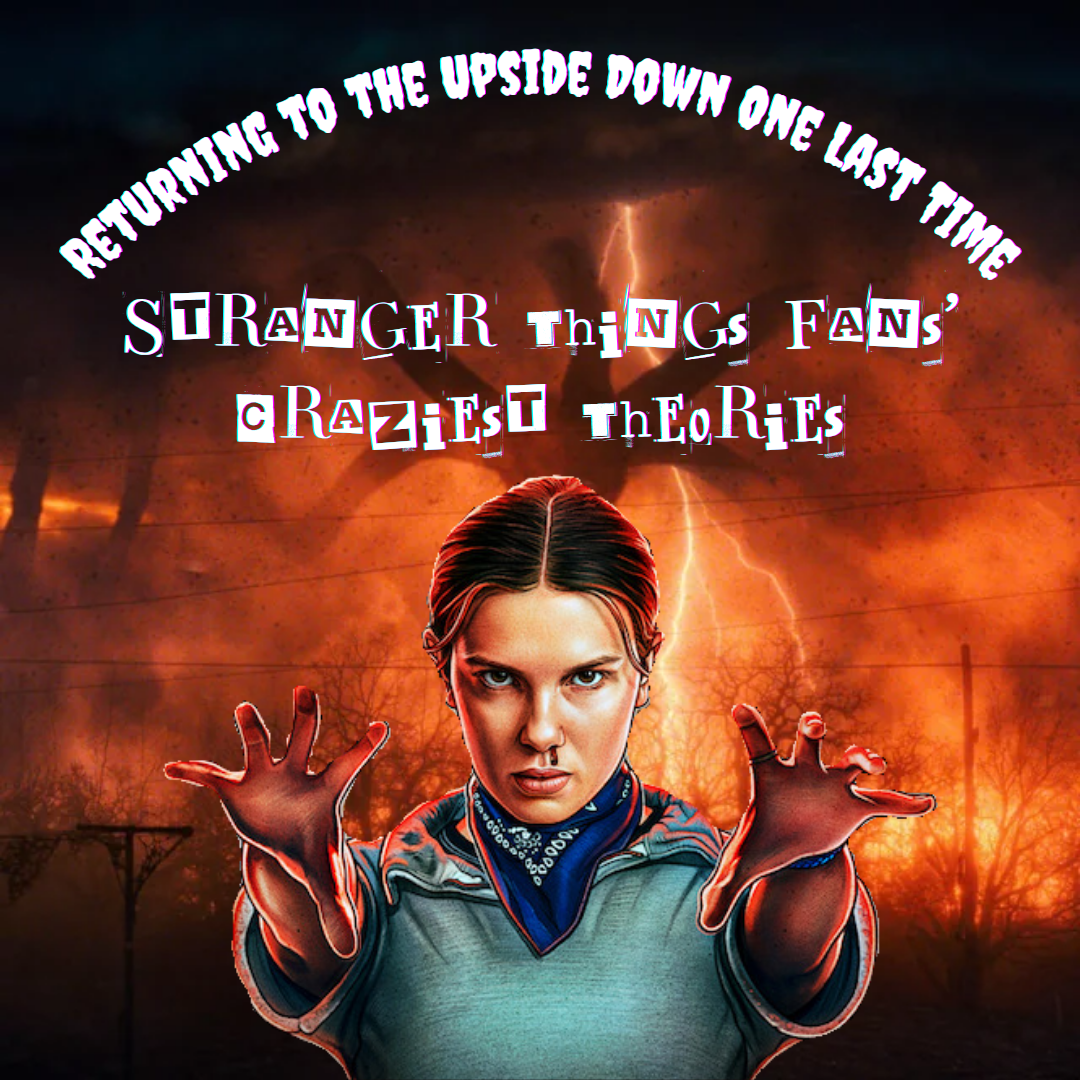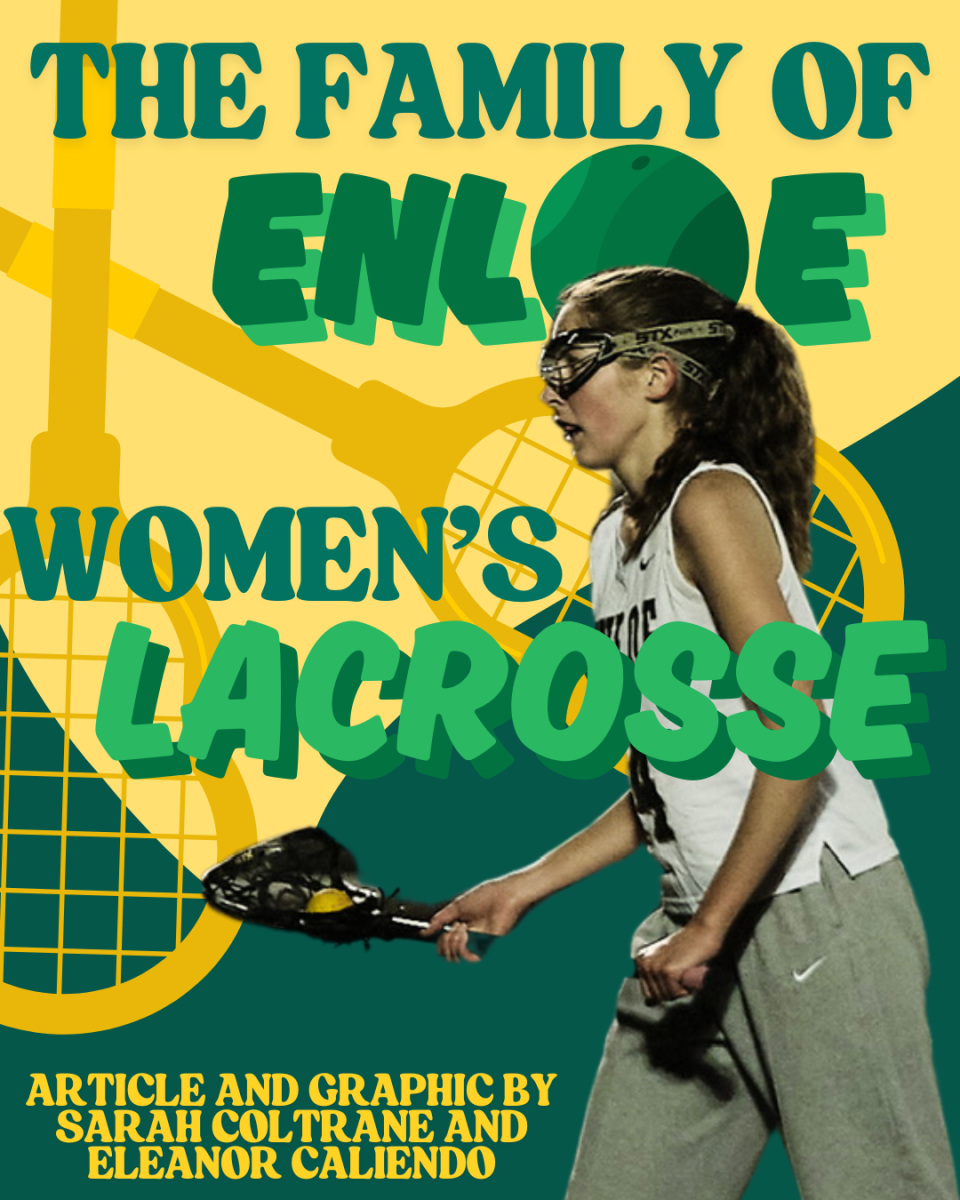Literally placed on the sidelines, the Enloe cheerleading team is widely known but often overlooked. They’re at every football and basketball game, but never the center of attention. From tryouts in late July to the end of basketball season in February, the cheerleaders are constantly tumbling, stunting, cheering, and hyping up Enloe crowds. As one of the Enloe sports teams with the longest season, their commitment is uncontested. Enloe Cheerleading does not remain the same across the eight months, though not many people pay attention to the nuances that distinguish the sport’s unique seasons.
A major difference is the acrobatics. “Stunting and tumbling on a basketball floor is so much different than on grass,” says senior Aeriess Stancil, a captain of the varsity cheer team. “[They’re] not allowed to do more of [their] intricate stunts [for basketball].” To prevent injury from falling on the court, the cheerleaders must have full support of a person the entire time, which is why they don’t get to flip in the gym like they do on the field. This is done in the interest of safety, as the cheerleaders are on a hard floor without mats.
Perhaps the biggest parts of cheerleading are the actual cheers, which also differ between the seasons. Everything in basketball happens very quickly, which means the court-side cheers often get cut off in the middle. The switch between offense and defense doesn’t happen nearly as rapidly in football, so the cheerleaders get to finish each cheer routine and don’t have to follow the possessions as intently. Junior Ashleigh Jones, another varsity captain, adds that for basketball, “when [they’re] sitting down in the bleachers, the cheers are not the same.” The football chants often feature demands for a specific number of points, while the basketball cheers are more general.
The cheers are frequently aimed at the crowd, which noticeably varies amidst the shift from field to court. “[During] football season, [she sees] a lot more alumni or people that do not usually come to Enloe,” Stancil says. There’s also more parent involvement during football season and Stancil notes that “[she’ll] see parents have posters up for their children.” Sophomore Deziyah Benson, co-captain of the JV team, observes that it is harder for the parents at basketball games to watch the cheerleaders. “[They are seated] on the side of [them]… not looking down at [them] like they are for football,” says Benson. In terms of the student section, Jones states that there are “more people at the football games, but [she feels like] the crowds are equal.” She attributes the increased hype at the basketball games to the cheerleaders.
The fact that the cheerleading season covers two sports is so impressive because the conditions are very different for each. Since basketball is inside, the temperature stays roughly the same, though it tends to be hot when the gym gets crowded. But football takes place outside, so the weather can change in an instant and it’s hard to know what to wear. The team cheers in the pouring rain too, although they might not tumble if it’s deemed dangerous. “During football, [they] get messy,” says Jones, referring to wearing paint and gems. However, basketball is different. Jones shares that “[they] have to be really put together and clean. [They’ve] never done paint during basketball season.”
Another huge distinguishing factor between the seasons doesn’t play out on the field or the court, but rather, takes place after school every week. During the football season, the “practices are longer and [they] have them more often compared to basketball,” says Jones. Since the basketball games are so scattered—not purely on Fridays like the football season—there’s no set practice schedule. Practices during basketball season face another hurdle as well: a lack of space. The cheerleaders practice in the gym during football season, but once the basketball teams take over, the cheerleaders are left to scour the school for locations suitable for tumbling. “[They] have to get creative,” says Stancil. The teams try to practice in the cafeteria when they can, but even so, “space is really limited,” Benson adds.
No matter the season, the cheerleaders often struggle to make their chants heard. “The cheers are better during basketball season… because you can hear the stomps and rhythm [which] hype up the crowd,” says Jones. During football season, the cheerleaders are positioned directly in front of the marching band, so someone from the team often has to tell Eagle Club to pay attention to the upcoming cheer, as they can’t hear over the music. The lack of a track on Enloe’s football field is also problematic. “You can’t hear the stomps on grass,” Jones states. However, Stancil feels that the cheers are worse during basketball season. “[The gym] is really, really loud. Sometimes [the crowd] doesn’t hear when you try to do call and response.” This is also the case for JV. Benson says that “[they] have to really project [their] voices to be louder […] sometimes the students may overpower [them].” She thinks that because the field is an open space, it’s easier to hear the cheers.
Amidst all the differences that divide the seasons, some aspects unite them as well. All of the chants are meant to support the school and have “[the cheerleaders’] energy reflect onto the [athletes],” says Benson. “[They] always do [their] good old Eagle Pride,” adds Stancil. So the next time you go to a football or basketball game, make sure to give the cheerleaders some well-deserved attention. Don’t take the team’s existence across multiple seasons for granted, and certainly don’t underappreciate just how unique their actions are as they shift from field to court.













